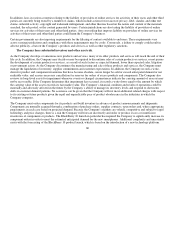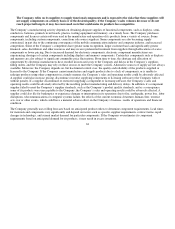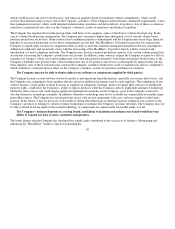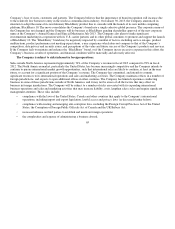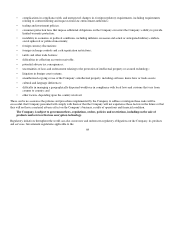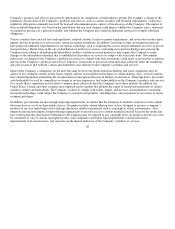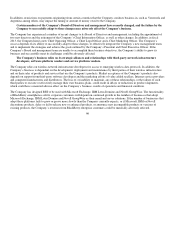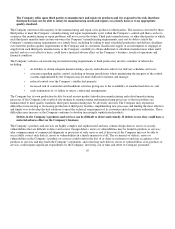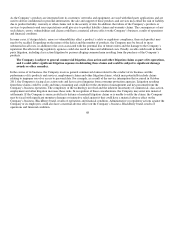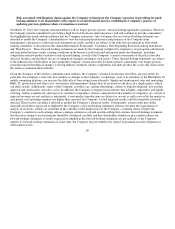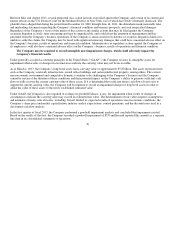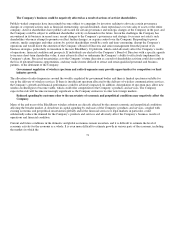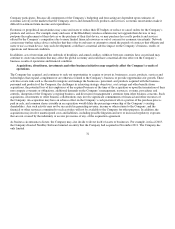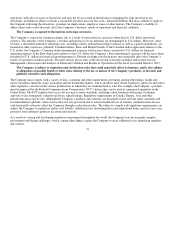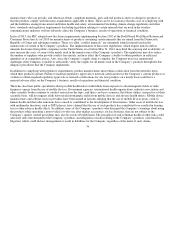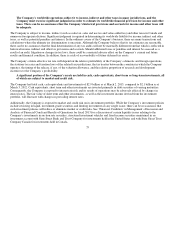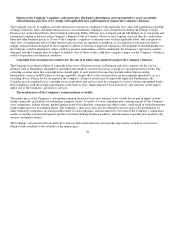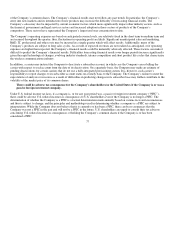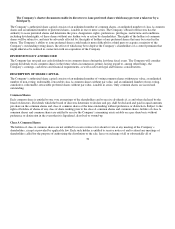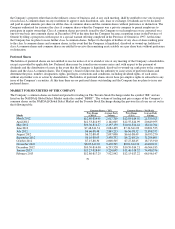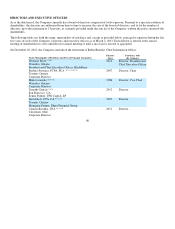Blackberry 2013 Annual Report Download - page 77
Download and view the complete annual report
Please find page 77 of the 2013 Blackberry annual report below. You can navigate through the pages in the report by either clicking on the pages listed below, or by using the keyword search tool below to find specific information within the annual report.
Between May and August 2011, several purported class action lawsuits were filed against the Company and certain of its current and
former officers in the U.S. District Court for the Southern District of New York, two of which have been voluntarily dismissed. The
plaintiffs have alleged that during the period from December 16, 2010 through June 16, 2011, the defendants made materially false
and misleading statements regarding the Company’s financial condition and business prospects, and seek unspecified damages.
Regardless of the Company’s views of the merits of this action or any similar actions that may be filed against the Company,
securities litigation is costly, time-consuming and may be unpredictable, and could divert the attention of management and key
personnel from the Company’s business operations. If the Company is unsuccessful in its defense of securities litigation claims or is
unable to settle the claims, the Company may be faced with significant monetary damages that could have a material adverse effect on
the Company’s business, results of operations and financial condition. Administrative or regulatory actions against the Company or
its employees could also have a material adverse effect on the Company’s business, results of operations and financial condition.
The Company may be required to record intangible asset impairment charges, which could adversely impact the
Company’s financial results
Under generally accepted accounting principles in the United States (“GAAP”), the Company reviews its intangible assets for
impairment when events or changes in circumstances indicate the carrying value may not be recoverable.
As at March 2, 2013, the Company’s long lived assets had a carrying value of approximately $5.8 billion. The assets represent items
such as the Company’s network infrastructure, owned office buildings and certain intellectual property, among others. The current
macroeconomic environment and competitive dynamics continue to be challenging to the Company’s business and the Company
cannot be certain of the duration of these conditions and their potential impact on the Company’s ability to generate sufficient cash
flows to fully recover the current carrying value of these assets. If it is determined that sufficient future cash flows do not exist to
support the current carrying value, the Company will be required to record an impairment charge for long lived assets in order to
adjust the value of these assets to the newly established estimated value.
Under GAAP, the Company is also required to evaluate its goodwill balance, if any, for impairment when events or changes in
circumstances indicate the carrying value may exceed its estimated fair value. The determination of fair values requires assumptions
and estimates of many critical factors, including, but not limited to: expected results of operations; macroeconomic conditions; the
Company’s share price and market capitalization; industry analyst expectations; control premiums; and the discount rates used in a
discounted cash flow analysis.
In the first quarter of fiscal 2013, the Company performed a goodwill impairment analysis and concluded that impairment existed.
Based on the results of that test, the Company recorded a goodwill impairment of $335 million and reported this amount as a separate
line item in its consolidated statements of operations.
70


